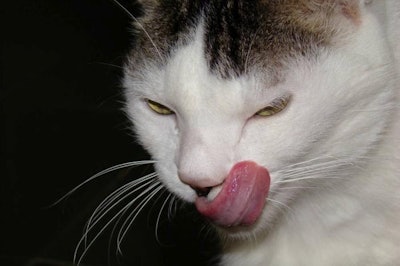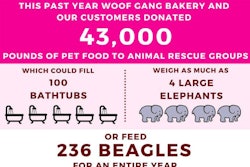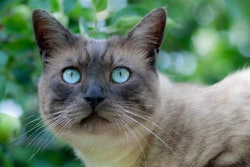
A new study about how cats choose their food intrigues me, both as a close observer of the pet food industry and as a cat owner. The study, conducted by scientists at the Waltham Centre of Pet Nutrition (part of Mars Petcare) and the University of Sydney, Australia, indicated that over time, cats instinctively began to select their food based on nutrition rather than flavor.
When first presented with the foods in the study, which had various ratios of fat and protein and were flavored with fish, rabbit or orange, the cats showed a preference based on flavor. “After ‘learning’ (due to prior exposure) about the nutritional composition of the foods, cats selected foods to reach a particular target balance of protein and fat regardless of added flavors,” said Adrian Hewson-Hughes, senior research scientist at the Waltham Centre and lead author of the study, quoted on Seeker.com.
As a cat owner, I’m having trouble buying into this study. True, the eating behavior of my cats is probably not a good filter for interpreting the findings. My two furry, plumpish guys, exclusively indoor cats, are probably about as far from natural behavior as a cat could get, especially the one who will rapidly and readily devour any food in sight—as long as it’s dry kibble. If he sees or smells wet cat food or treats, he literally turns and runs the other way. (It’s a good thing I like quirky animals—and quirky people, for that matter.)
My cats don’t have the chance to show preference for one food over another. Besides the weird one’s severe aversion to anything but dry food, the other cat (who will happily and daintily nibble on any type of cat food) has a sensitive tummy, so I keep him on the same diet that I know he tolerates well. And since it’s a dry diet, the weird cat will chow it down, too. (Don’t get me wrong, the other cat’s pretty weird, too. After all, they’re both cats.)
Perhaps that’s my main problem with this study and how it might apply to feeding pet cats: do most cats really get to choose from several food options? Even if a cat is the stereotypical finicky feline, its owner is most likely to try one new food at a time, not offer a variety of several at once. And it should be noted that the foods used in the study were not traditional, processed cat foods. (You can read it on Royal Society Open Science.) So how do most domestic housecats “learn” to eat based on macronutrient balancing, as described in the published study? And how does this help pet food companies develop cat foods?
“This research has enabled Mars Petcare to understand more about developing foods for cats with both appealing flavors and the appropriate nutrient composition that ensures cats continue to eat foods in the long term,” Hewson-Hughes said. Of course, for competitive reasons, Mars is unlikely to share exactly how that development is aided by the research. I would argue that every pet food company develops cat foods that are both appealing in flavor and have the appropriate nutrient composition—otherwise, the products wouldn’t succeed in the marketplace.
And whoever heard of healthy cats not continuing to eat? Besides sleeping, that is one of the major functions of the modern domestic cat.

















